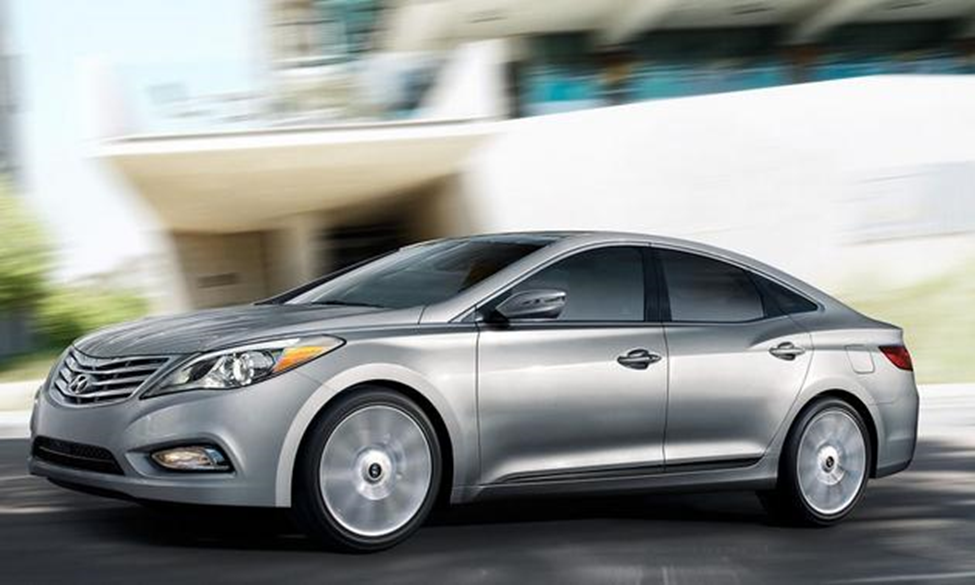It’s amazing what a change in color scheme can do. The deep red paint — Hyundai calls it Venetian red pearl — seemed to give the wind-tunnel-optimized body a bit more definition, while a black interior certainly made switchgear and other hard plastic components look less cheap.
That said, there are a few things that Hyundai, assuming it really is trying to play the luxury game, can’t seem to get right (yet). The strips of brightwork down the side of the car, for example. They look great in photos, but in person they seem like cheap, flashy after market add-ons.
The same goes for the interior. The leather-wrapped steering wheel feels well-crafted, but the admirably functional center console may as well have been lifted from the Santa Fe. Solid and well put together, but not “luxurious.”
Hyundai aimed a bit higher with the door-mounted seat adjustment switches: The configuration is more or less copied wholesale from Mercedes-Benz, down to the black enamel and brushed-metal trim detailing. But, hey, whatever works.
I found the 293-hp V6 to be adequate, though the suspension and powertrain is optimized for middle-of-the-road comfort rather than any type of performance. That’s OK for Hyundai: comparable cars like the Lexus ES 350 and Buick Lacrosse seem to shoot for “adequate” as well, so back-to-back test drives won’t put the Azera at a distinct disadvantage (though the Azera does lose out, slightly, where rear legroom is concerned).
To Hyundai product developers/marketers, the Azera is probably the logical step up from an Elantra/Sonata, or perhaps the perfect way to round out a personal motor pool that already includes a Santa Fe. But the car-buying public isn’t logical. Unless Hyundai has cultivated legions of loyal buyers, it will take more than a cheaply accented interior to convince consumers to step up to the Azera from its less expensive but still-attractive offerings — or prevent them from jumping ship for a better-established entry-level luxury marque entirely.
There were things I liked about the Azera. The light blue ambient lighting gently peeking out from under the dash and door panels was sweet. Was it worth placement in $4,000 options package? No, features such as ambient lighting ought to be standard on a $37,000 car making a play for near-luxury status.
The layout of the center stack was streamlined and easy to digest, and the features I use most — satellite radio, navigation, heated seats — were all quick finds.
From the tall arched headlights to the chrome-colored door handles and the dual exhaust, the exterior of the Azera has some character. It just wasn’t enough to win me over.
As noted, the powertrain is fine, if a little slow to respond, but that’s directly related to driving in Eco mode, which tries to force economical driving habits. Punch through the throttle détente and there’s plenty of power, most assuredly. Steering is nicely weighted, ride is smooth and the driving position is good.
But then there are the things that remind us that this is still a Hyundai that’s trying to take a step up, and not always in the best way. While the exterior styling is sharp, the chrome strips are garish, not only in execution but in size and reach (too wide, and running up the fender to the headlights looks tacked on) and the wheels are the most underwhelming 10-spokers I’ve ever seen. That’s too bad because those little inconsistencies detract from what is otherwise a smart looker with plenty of upscale potential.



